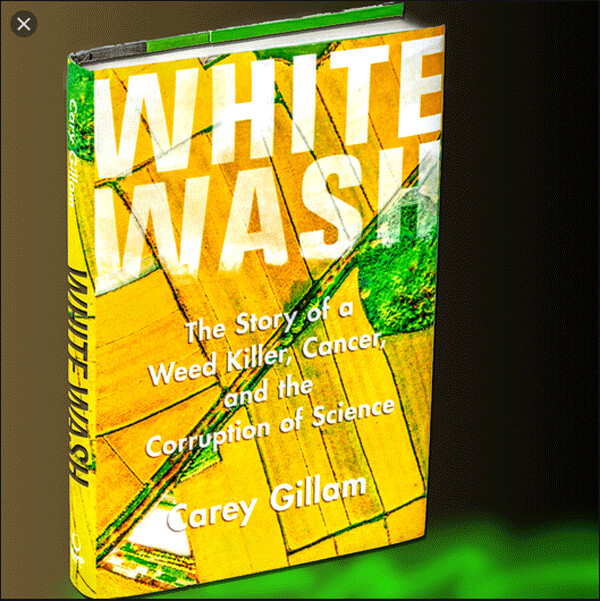Time to Roundup evidence on glysophate

Back in the early 1980s, I was editor and co-owner of a weekly newspaper in Superior, and among the people I had contributing to the weekly was a friendly farmer from South Range by the name of Wesley Thompson.
Wes loved his job and often waxed enthusiastically about it, both in person and on paper, but I particularly remember how enthusiastic he was about a new wonder chemical for combating weeds. Wes was absolutely smitten not only by how well the product worked but also by the claims that it was an environmentally friendly herbicide. The chemical was called Roundup.
When Roundup was first introduced in 1974 by Monsanto, it was touted as the safest pesticide ever brought to market. Because the active ingredient is glyphosate salt, Roundup was described as being “as safe as table salt” and some proponents went so far as to say it was safe enough to drink.
Fast forward 35 years and chemical giant Monsanto has been absorbed into the German pharmaceutical giant Bayer, which is taking heat for buying Monsanto in 2018 because of all the lawsuits against Monsanto for unleashing Roundup on the world and making it the most popular agricultural chemical the world has ever seen.
Not only did farmers like Wes Thompson use and believe in Roundup, but golf courses, city parks and playgrounds used the stuff as the best way to exterminate weeds.
According to journalist Carey Gillam, author of the book Whitewash: The Story of a Weed Killer, Cancer, and the Corruption of Science, the broad use of glysophate has given it “a reach into every avenue of our lives.” She maintains that everyone who eats risks exposure to this ubiquitous chemical.
What makes Gillam’s story of whitewash and corruption even more amazing is that Monsanto had a long history of producing harmful chemicals that were unleashed on an unsuspecting public, beginning with saccharine (banned in 1981 as a carcinogen), and moving on to even more deadly products such as PCBs (banned in 1974 for causing birth defects and cancer), DDT (banned in 1972 for its risks to the environment and both animal and human health) and the dioxin-based defoliant used in Vietnam and known as Agent Orange (banned in 1971 for causing a variety of disabilities, including birth defects, diabetes and cancer).
Gillam weaves a tale of farmers just like Wes Thompson who believed the Roundup hype and promoted it to others, along with efforts to whitewash any negative pronouncements about the chemical. One such farmer Gillam highlights is Jack McCall, who died of an aggressive form of non-Hodgkin Lymphoma in 2015, the same year a team from the World Health Organization’s International Agency for Research on Cancer announced that glysophate was a probable human carcinogen possibly responsible for the type of cancer that killed McCall.
McCall’s widow and thousands of other survivors of cancer victims who used Roundup or worked where it was used have filed lawsuits against Monsanto.
Gillam has continued to follow the story, posting just last week that a Bayer shareholder in California filed suit against the company for its %63 billion acquisition of Monsanto when it faces paying billions of dollars in damages in Roundup claims. “The Monsanto acquisition is a disaster,” the lawsuit states. “Roundup is doomed as a commercial product.”
While that is true in a number of countries that have looked at or are planning to ban the herbicide, U.S. regulatory agencies continue to sing Roundup’s praises.
In January the Environmental Protection Agency declared “that there are no risks of concern to human health when glysophate is used according to the label and that it is not a carcinogen.”
The whitewash portion of the book details fraudulent and non-peer reviewed tests conducted by Monsanto and laboratories that have been discredited, such as Industrial Bio-Test Lab, where in 1983, three company officials were convicted of trying to defraud the government with bogus glysophate test results, which included replacing dead test animals with live ones. One of those officials was a former Monsanto employee who
went back to work for the company after his conviction.
U.S. regulatory agencies have been complicit as well for not including glysophate in hundreds of annual pesticide residue level tests. In fact, the EPA has allowed much higher legal rates of glysophate residue in good than levels in most other counfies.
Just last August former coal industry lobbyist and now-Trump EPA Administrator Andrew Wheeler was quoted in an EPA press release regarding California efforts to label glysophate as a carcinogen: “It is irresponsible to require labels on products that are inaccurate when EPA knows the product does not pose a cancer risk. It is critical that federal regulatory agencies like EPA relay to consumers accurate, science based information about risks that pesticides pose to them.”
Wheeler’s comment about science-based information must have had them rolling in the aisles at the offices of the Union of Concerned Scientists, where according to senior writer Elliott Negin said the organization has compiled a list of 80 Trump administration attacks on science, adding that “Wheeler has been the driving force behind many of them.”
Gillam points out in her book that there needs to be a separation between politics and work that should be done on behalf of the public good by regulatory agencies, and she closes her final chapter with this thought from Rachel Carson’s Silent Spring: “If, having endured much, we have at last asserted our ‘right to know,’ and if, knowing, we have concluded that we are being asked to take senseless and frightening risks, then we should no longer accept the counsel of those who tell us that we must fill our world with poisonous chemicals, we should look about and see what other course is open to us.”
